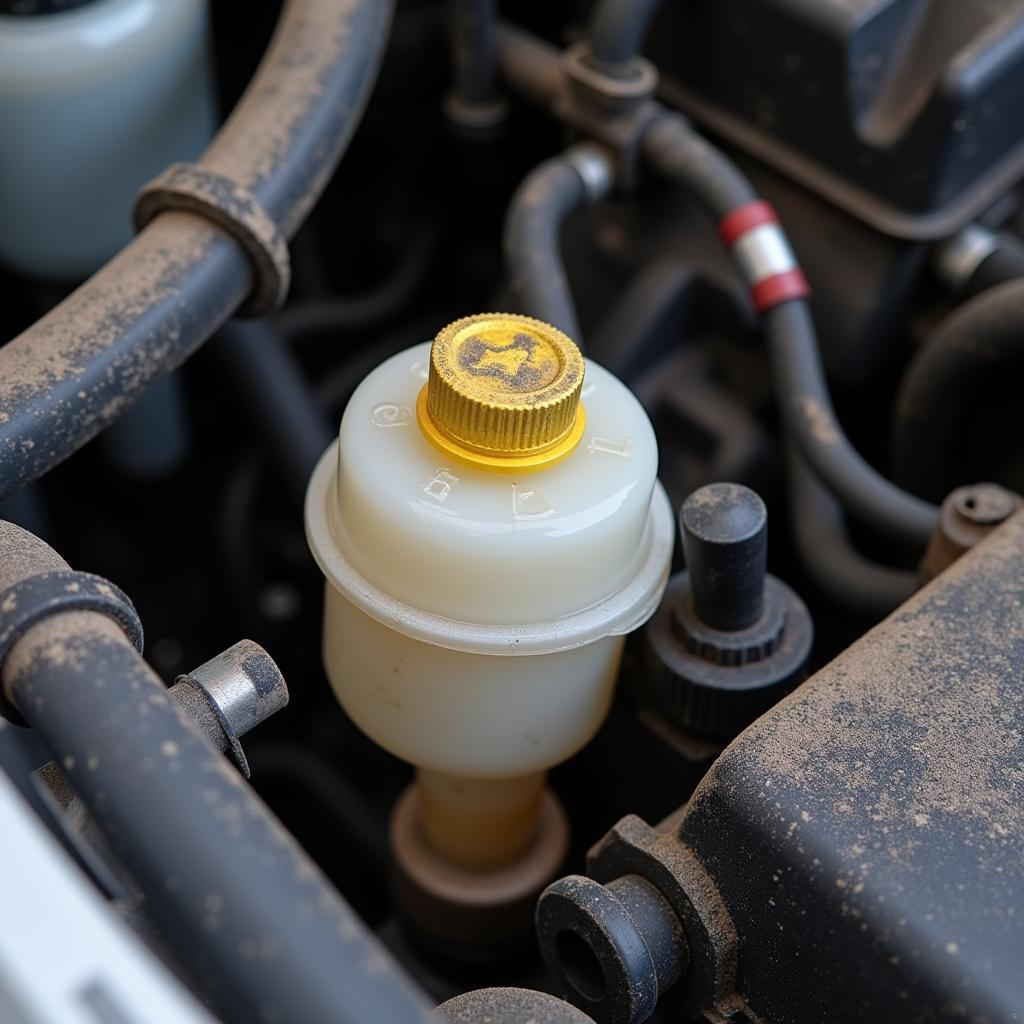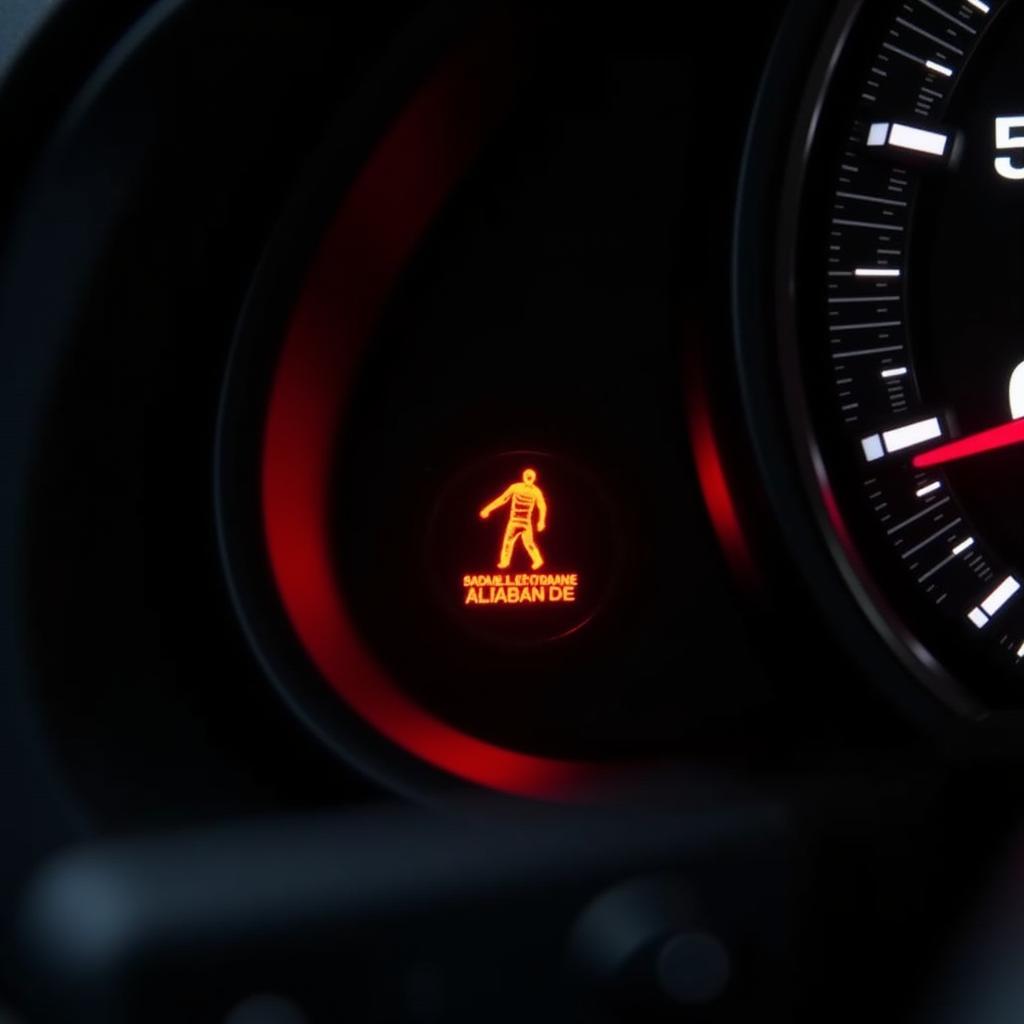The dreaded symbol illuminates your dashboard – the bmw brake pad warning light symbol. What does it mean? Don’t panic! This article will guide you through understanding the bmw brake pad warning light symbol, its implications, and what actions you need to take. We’ll cover everything from diagnosing the problem to outlining the potential costs involved.
Understanding the bmw brake pad warning light symbol is crucial for maintaining your BMW’s safety and performance. This seemingly small light can be a harbinger of significant issues if ignored. It’s more than just an inconvenience; it’s a critical safety alert. See our article on the bmw brake pad warning light symbol for a detailed overview.
What Does the BMW Brake Pad Warning Light Look Like?
The bmw brake pad warning light symbol is typically a circle surrounded by parentheses with lines protruding from the sides, resembling a stylized brake pad. It often illuminates in yellow or amber, indicating the need for attention. In some cases, a red warning light may appear, signifying a more urgent problem.
Why is My BMW Brake Pad Warning Light On?
The most common reason for the bmw brake pad warning light symbol to illuminate is worn brake pads. Your brake pads have wear sensors that trigger the warning light when they reach a certain minimum thickness. However, other issues can also trigger the light, including:
- Faulty brake pad wear sensor: Sometimes, the sensor itself can malfunction, triggering the light even if the brake pads are still good.
- Low brake fluid: Low brake fluid can also activate the warning light as it indicates a potential leak or issue within the braking system. You can learn more about this in our brake fluid warning light article.
- Issues with the ABS (Anti-lock Braking System): While less common, problems with the ABS can sometimes cause the brake pad warning light to come on.
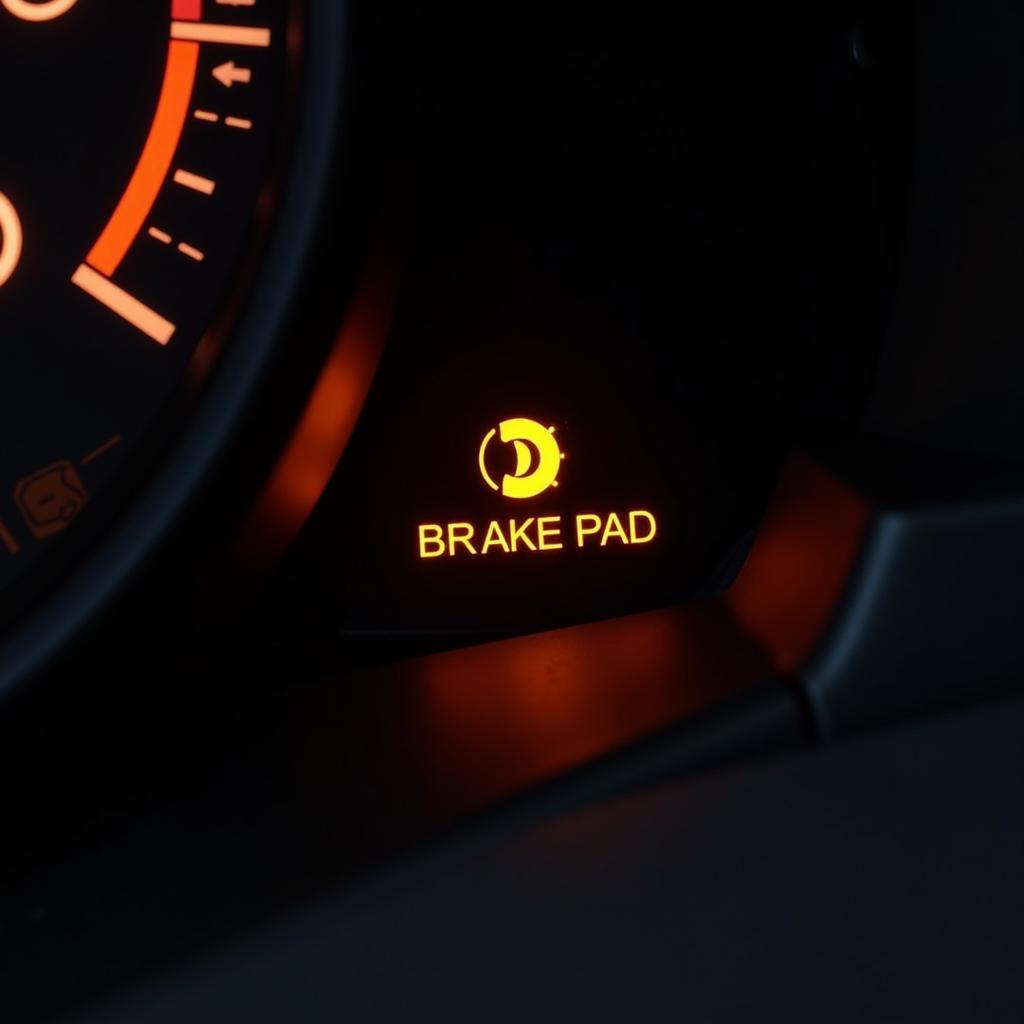 BMW Brake Pad Warning Light on Dashboard
BMW Brake Pad Warning Light on Dashboard
Diagnosing the Problem
Determining the exact cause requires a bit of investigative work. Start by visually inspecting your brake pads. If they appear thin, it’s likely time for a replacement. If the pads look okay, check your brake fluid level. Refer to your owner’s manual for the correct procedure and location of the brake fluid reservoir. If the brake fluid is low, you likely have a leak and should consult a mechanic immediately. If both the pads and fluid appear fine, the issue could be a faulty sensor or a problem with the ABS. In these cases, it’s best to seek professional diagnosis. For BMW 3 series owners, we have a dedicated article about the brake fluid warning light bmw 3 series for specific information.
What to Do When the BMW Brake Pad Warning Light Comes On
The first and most important step is to avoid panic. Pull over to a safe location as soon as possible and assess the situation. If the brake pedal feels spongy or unresponsive, do not drive the car. Call a tow truck and have your vehicle transported to a qualified mechanic. If the brakes seem to function normally, cautiously proceed to a nearby mechanic to have the issue diagnosed. Don’t delay addressing the problem. Driving with worn brake pads is dangerous and can lead to more extensive and costly repairs. Find out how long can i drive after brake pad warning light in our dedicated guide.
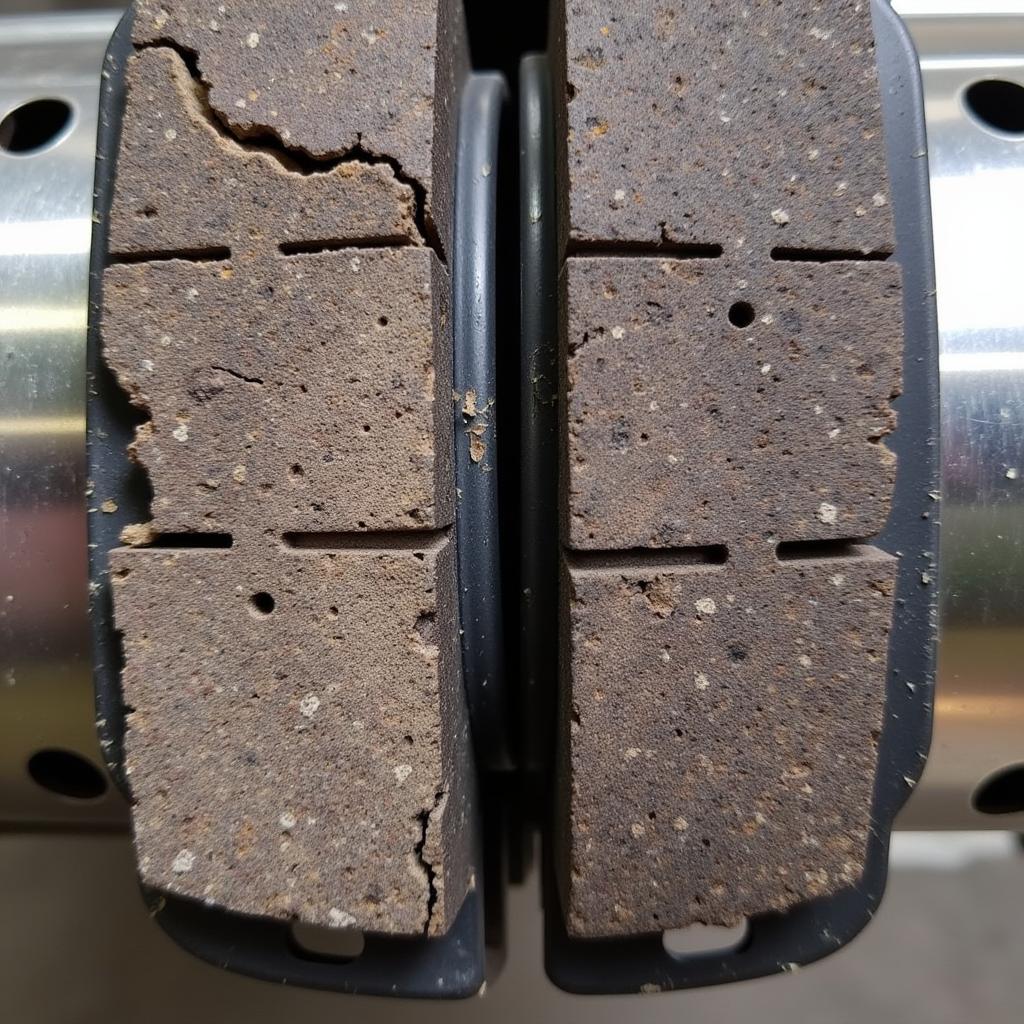 Worn vs. New Brake Pads
Worn vs. New Brake Pads
What if my brakes fail without warning?
While rare, brake failure can occur. In such situations, your immediate priority is to stay calm and maintain control of the vehicle. If your brakes fail while driving, see our guide on what to do if brakes without warning when driving. Remember, safety is paramount.
Cost of Repairing BMW Brake Pads
The cost of replacing brake pads varies depending on the model of your BMW and the type of brake pads used. Generally, you can expect to pay anywhere from $200 to $500 per axle for parts and labor. If the issue is related to the brake sensor or ABS, the costs can be significantly higher.
“Regular brake maintenance is crucial for safety and can prevent more expensive repairs down the road,” says John Davis, a seasoned automotive technician with over 20 years of experience specializing in BMWs. “Ignoring the brake pad warning light can lead to rotor damage, caliper issues, and even brake failure.”
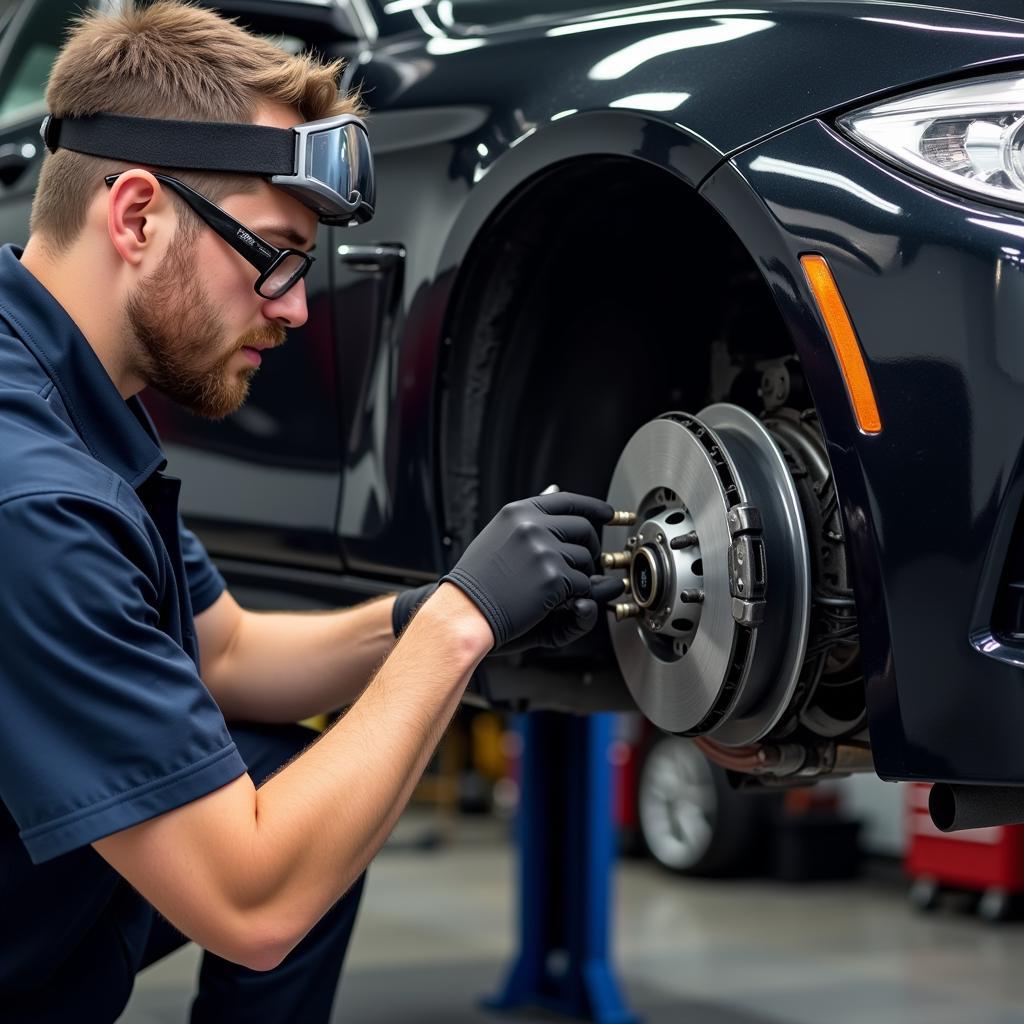 Mechanic Inspecting BMW Brakes
Mechanic Inspecting BMW Brakes
Conclusion
The bmw brake pad warning light symbol is a critical safety indicator. Understanding its meaning and taking prompt action can save you from potentially dangerous and costly situations. Don’t ignore this warning. Have your vehicle inspected by a qualified mechanic to ensure your BMW’s braking system is in optimal condition.
“Remember,” adds Davis, “preventative maintenance is always more cost-effective than reactive repairs. Regular brake checks are a small investment for your peace of mind and safety.”
FAQ
-
What does the BMW brake pad warning light symbol look like? It typically resembles a circle with parentheses and lines extending from the sides, like a stylized brake pad.
-
What should I do if my BMW brake pad warning light comes on? Pull over safely and assess the situation. If the brakes feel compromised, call a tow truck. Otherwise, cautiously proceed to a mechanic.
-
Can I drive with the brake pad warning light on? While you might be able to drive a short distance, it’s highly discouraged. Driving with worn brakes is dangerous.
-
How much does it cost to replace BMW brake pads? The cost typically ranges from $200 to $500 per axle, depending on the model and type of brake pads.
-
What could cause the brake pad warning light to come on besides worn pads? A faulty sensor, low brake fluid, or issues with the ABS could also trigger the light.
-
What should I do if my brakes fail while driving? Remain calm, pump the brakes, downshift, engage the emergency brake gradually, and use friction from roadside objects if necessary.
-
How often should I check my brake pads? It’s recommended to have your brakes inspected every 12,000 miles or at least once a year.

